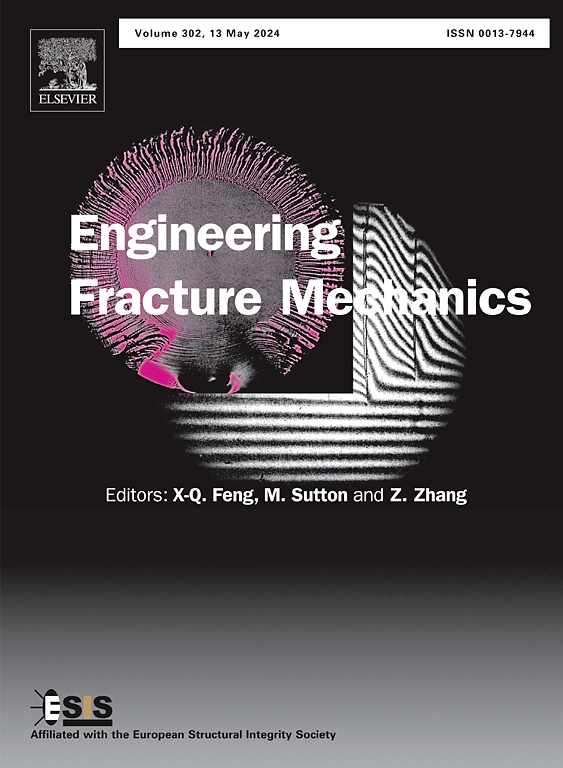橡胶混凝土相场模型:一种中尺度有限元方法
IF 4.7
2区 工程技术
Q1 MECHANICS
引用次数: 0
摘要
这项工作实现了一个相场模型来检查橡胶增强混凝土的中尺度力学行为,使用Abaqus中的UELMAT子程序。建模涉及砂浆、骨料、橡胶及其界面过渡区四个阶段的离散化。Python脚本根据大小分布曲线生成圆形聚合的随机分布。研究了橡胶代替不同比例粗骨料对混凝土力学性能的影响。引入了一种基于混凝土损伤塑性模型的涂抹裂纹扩展方法,该方法包括砂浆基质和过渡区。采用单轴拉伸试验对橡胶混凝土的力学性能进行了评价。对比分析包括实验数据、分析模型和混凝土损伤塑性模型的结果。研究结果表明,相场模型的潜力,作为工程设计工具的钢筋混凝土结构与橡胶作为一个整体骨料。本文章由计算机程序翻译,如有差异,请以英文原文为准。
Phase field modeling of rubber-reinforced concrete: A mesoscale finite element approach
This work implements a phase field model to examine the mesoscale mechanical behavior of rubber-reinforced concrete, using a UELMAT subroutine in Abaqus. The modeling involves discretizing four phases: mortar, aggregate, rubber, and their interfacial transition zones. A Python script generates a random distribution of circular aggregates based on a size distribution curve. The study investigates the effect of replacing varying proportions of coarse aggregate with rubber on concrete’s mechanical behavior. A smeared crack propagation method based on the Concrete Damaged Plasticity Model is incorporated, encompassing both the mortar matrix and transition zones. Uniaxial tensile tests were conducted to evaluate the mechanical properties of rubber-incorporated concrete. Comparative analysis includes results from experimental data, an analytical model, and the Concrete Damaged Plasticity Model. The findings demonstrate the phase field model’s potential as a tool for engineering the design of reinforced concrete structures with rubber as an integral aggregate.
求助全文
通过发布文献求助,成功后即可免费获取论文全文。
去求助
来源期刊
CiteScore
8.70
自引率
13.00%
发文量
606
审稿时长
74 days
期刊介绍:
EFM covers a broad range of topics in fracture mechanics to be of interest and use to both researchers and practitioners. Contributions are welcome which address the fracture behavior of conventional engineering material systems as well as newly emerging material systems. Contributions on developments in the areas of mechanics and materials science strongly related to fracture mechanics are also welcome. Papers on fatigue are welcome if they treat the fatigue process using the methods of fracture mechanics.

 求助内容:
求助内容: 应助结果提醒方式:
应助结果提醒方式:


